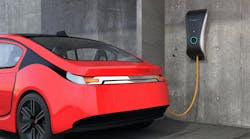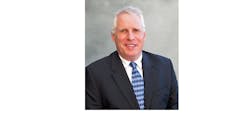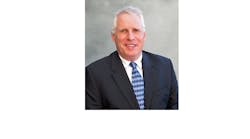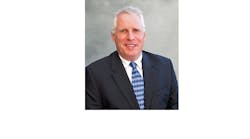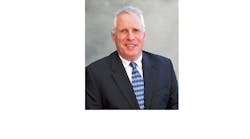The changes forecast for distributors in NAW's latest benchmark study aren't gentle breezes rustling through the offices and warehouses of distributors, seldom blowing a purchase order or shipping label out of place. They are more like Category 5 wind gusts that could tear a business from its foundation.
“Facing the Forces of Change — The Road to Opportunity,” published by the National Association of Wholesaler-Distributors (NAW), Washington, D.C., challenges distributors with some new assumptions that would radically change this business as we know it.
Authored by Adam Fein, president, Pembroke Consulting, Philadelphia, after he and his team interviewed more than 100 distribution executives and 400 manufacturers and analyzed 1,000-plus survey responses from distributors, the study delves into many intriguing scenarios already confronting distributors in the industrial, construction, retail, medical/pharmaceutical businesses and many other lines of trade. Some of the challenges covered in the book that electrical distributors should contemplate include:
-
A growing trend in all aspects of the customer relationship toward “self-service” will drive more electrical contractors and industrial buyers to the Web not only to make purchases but also to educate themselves about products and compare the service packages you offer with those of your competitors.
-
The labor-only contracts some home builders and general contractors already use with installers of flooring, windows and other key housing products could spread to the electrical industry. In these arrangements, a builder or general contractor negotiates a purchasing contract directly with a manufacturer and pays the subcontractors only for his or her labor.
-
Manufacturers will venture away from distributors and experiment with third-party logistics companies and other outsourced functions.
The study discusses how these and other trends may collide in a new scenario where your customers and suppliers pick the services they want from you and replace the ones that they don't need with services provided by other players. Although this new world doesn't sound like much fun for electrical distributors, “Facing the Forces of Change — The Road to Opportunity” isn't painting a doomsday scenario for the distribution business. The trends discussed in the study will affect different distribution industries to varying degrees.
Electrical distributors will have a completely different take on this study than distributors in other markets. For instance, Fein says contractors will not move most of their purchasing online. However, distributors focusing on mammoth industrials with centralized purchasing for all MRO supplies, Fortune 500 companies or large retail stores better have a pretty darn good online storefront.
But some of the trends Fein discovered will have universal impact across the wholesale-distribution market. One may be the move toward self service. Writes Fein in the book, “Customers will roam, searching for information and taking over more of the presale and transactional activities typically handled by their wholesale-distributors.” To an electrical distributor, that could mean an office full of field salespeople who have had one of their core functions replaced.
The study doesn't sound the death knell for distributors. Indeed, in the electrical industry, at least 75 percent of all sales travel through the electrical distributor. While the alternate sources of supply and macrotrends mentioned in this study are sure to chip away at this commanding market share, they can't and won't replace electrical distributors' core services of local stock, credit and (hopefully) solid personal relationships.
However, that doesn't mean distributors can dismiss this NAW study. The impact of the trends it discusses are real and already underway across the wholesale-distribution industry. If you want to learn more about the forces now transforming the wholesale-distribution business, pick up a copy of this book. You can order “Facing the Forces of Change — The Road to Opportunity” online at the NAW Web site, www.naw.org.
